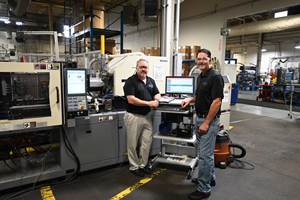Clearing the Red Tape for Driverless Cars Cuts Both Ways
New technologies and smart legislation could initiate a new round of purchases.
It should be no surprise to anyone that the vast majority of existing U.S. Federal motor-vehicle safety rules have been written with the assumption that a qualified human is behind the wheel. For this reason, autonomous vehicles have moved into a legal gray area. As the technology progresses and testing is conducted on active roadways, issues of safety and liability must be addressed quickly. In response, some states are crafting their own legislation; however, the end result will be a hodge-podge of state-by-state regulations that restrict and regulate the safety and performance of autonomous vehicles, where unified federal regulation would be preferable for the industry.
To prevent a disadvantageous state-by-state regulatory outcome, the House Energy and Commerce Committee is expected to unveil legislation to smooth the way for the inclusion of autonomous vehicles on public roads. Simultaneously, the Senate Commerce Committee is also crafting legislation to help smooth the regulatory road for the expanded use of autonomous cars with the help of Sen. Gary Peters (D-Mich.).
The introduction of reasonable legislation allowing for the safe incorporation of autonomous vehicles onto public roads cannot come soon enough. Automotive industry data shows a disconnect between new orders and the value of shipments. The 2017 ratio of the value of new orders to shipments (at 6.6 x) is 33% higher than the average ratio since 1992 of 4.9 x. These results suggest that manufacturers are significantly hedging their output despite strong new-order demand.
Manufacturers have several reasons for limiting their output. In general, the sedan and small-car markets have lacked profitability for the big OEMs, especially as incentives hit all-time highs in 2017. According to J.D. Power, incentives in 2017 are expected to exceed $4000, approximately a 15% increase over 2016 incentive levels.
Moreover, automotive credit data shows several concerning signs. According to the latest Federal Reserve data, the average maturity of new car loans is more than 67 months, in part due to the growing popularity and availability of 72- and 84-month term auto loans in recent years. Such long-term loans mean that the vehicle loses value faster than the amount of the loan outstanding, resulting in the owner having negative equity in the vehicle.
If the Fed begins raising interest rates to combat inflation and normalize the economy, interest rates will certainly increase. Fed data measuring the average finance rate of new-car loans shows that interest rates in a normal interest-rate environment could easily reach 7% or more, significantly more than that the 5.1% rate recorded in the first quarter of 2017. Even with exceptionally low interest rates, financing flows for motor-vehicle loans have been falling since 2015, and in 2017 those flows turned negative.
The question becomes: Have consumers exhausted their appetite for new cars, or is this simply a pause before a new wave of purchasing occurs? Regardless, there is much that can be done to advance the industry through new technologies and smart legislation.
ABOUT THE AUTHOR: Michael Guckes is the chief economist for Gardner Business Intelligence, a division of Gardner Business Media (Cincinnati, OH US). He has performed economic analysis, modeling and forecasting work for nearly 20 years among a wide rangeof industries. Michael received his BA in political science and economics from Kenyon College and his MBA from Ohio State University. Contact (513) 527-8800; mguckes@gardnerweb.com; gardnerweb.com.
Related Content
Automotive Awards Highlight ‘Firsts,’ Emerging Technologies
Annual SPE event recognizes sustainability as a major theme.
Read MoreAtop the Plastics Pyramid
Allegheny Performance Plastics specializes in molding parts from high-temperature resins for demanding applications as part of its mission to take on jobs ‘no one else does.’
Read MoreDesign Optimization Software Finds Weight-Saving Solutions Outside the Traditional Realm
Resin supplier Celanese turned to startup Rafinex and its Möbius software to optimize the design for an engine bracket, ultimately reducing weight by 25% while maintaining mechanical performance and function.
Read MoreImpacts of Auto’s Switch to Sustainability
Of all the trends you'll see at NPE2024, this one is BIG. Not only is the auto industry transitioning to electrification but there are concerted efforts to modify the materials used, especially polymers, for interior applications.
Read MoreRead Next
How Polymer Melts in Single-Screw Extruders
Understanding how polymer melts in a single-screw extruder could help you optimize your screw design to eliminate defect-causing solid polymer fragments.
Read MoreProcessor Turns to AI to Help Keep Machines Humming
At captive processor McConkey, a new generation of artificial intelligence models, highlighted by ChatGPT, is helping it wade through the shortage of skilled labor and keep its production lines churning out good parts.
Read More
.jpg;width=70;height=70;mode=crop)




















